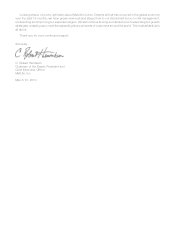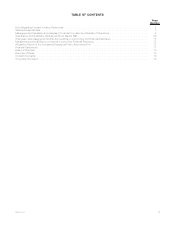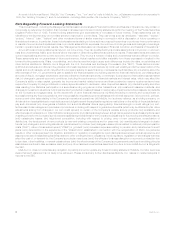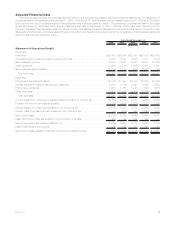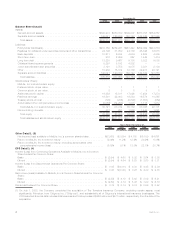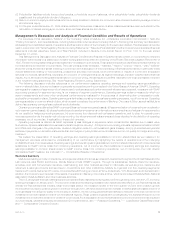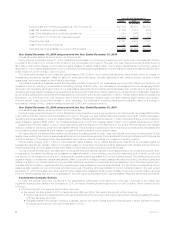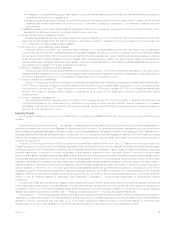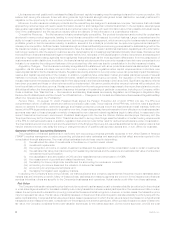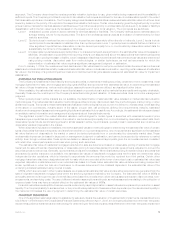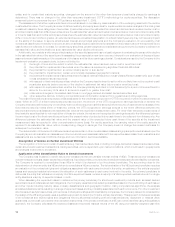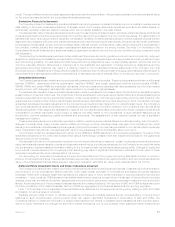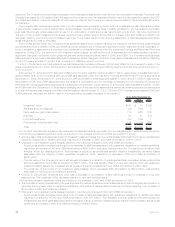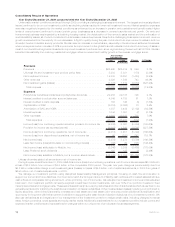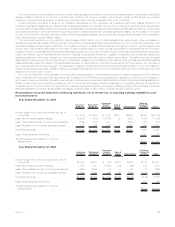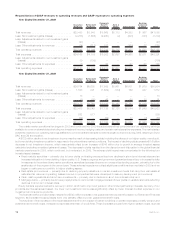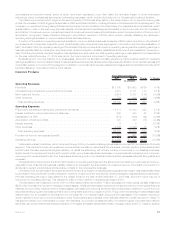MetLife 2009 Annual Report Download - page 15
Download and view the complete annual report
Please find page 15 of the 2009 MetLife annual report below. You can navigate through the pages in the report by either clicking on the pages listed below, or by using the keyword search tool below to find specific information within the annual report.approach. The Company determines the most appropriate valuation technique to use, given what is being measured and the availability of
sufficient inputs. The Company prioritizes the inputs to fair valuation techniques and allows for the use of unobservable inputs to the extent
that observable inputs are not available. The Company categorizes its assets and liabilities measured at estimated fair value into a three-level
hierarchy, based on the priority of the inputs to the respective valuation technique. The fair value hierarchy gives the highest priority to quoted
prices in active markets for identical assets or liabilities (Level 1) and the lowest priority to unobservable inputs (Level 3). An asset or liability’s
classification within the fair value hierarchy is based on the lowest level of input to its valuation. The input levels are as follows:
Level 1 Unadjusted quoted prices in active markets for identical assets or liabilities. The Company defines active markets based on
average trading volume for equity securities. The size of the bid/ask spread is used as an indicator of market activity for fixed
maturity securities.
Level 2 Quoted prices in markets that are not active or inputs that are observable either directly or indirectly. Level 2 inputs include
quoted prices for similar assets or liabilities other than quoted prices in Level 1; quoted prices in markets that are not active; or
other significant inputs that are observable or can be derived principally from or corroborated by observable market data for
substantially the full term of the assets or liabilities.
Level 3 Unobservable inputs that are supported by little or no market activity and are significant to the estimated fair value of the assets or
liabilities. Unobservable inputs reflect the reporting entity’s own assumptions about the assumptions that market participants
would use in pricing the asset or liability. Level 3 assets and liabilities include financial instruments whose values are determined
using pricing models, discounted cash flow methodologies, or similar techniques, as well as instruments for which the
determination of estimated fair value requires significant management judgment or estimation.
Prior to January 1, 2009, the measurement and disclosures of fair value based on exit price excluded certain items such as nonfinancial
assets and nonfinancial liabilities initially measured at estimated fair value in a business combination, reporting units measured at estimated
fair value in the first step of a goodwill impairment test and indefinite-lived intangible assets measured at estimated fair value for impairment
assessment.
Estimated Fair Value of Investments
The Company’s investments in fixed maturity and equity securities, investments in trading securities, certain short-term investments, most
mortgage loans held-for-sale, and mortgage servicing rights (“MSRs”) are reported at their estimated fair value. In determining the estimated
fair value of these investments, various methodologies, assumptions and inputs are utilized, as described further below.
When available, the estimated fair value of securities is based on quoted prices in active markets that are readily and regularly obtainable.
Generally, these are the most liquid of the Company’s securities holdings and valuation of these securities does not involve management
judgment.
When quoted prices in active markets are not available, the determination of estimated fair value is based on market standard valuation
methodologies. The market standard valuation methodologies utilized include: discounted cash flow methodologies, matrix pricing or other
similar techniques. The inputs to these market standard valuation methodologies include, but are not limited to: interest rates, credit standing
of the issuer or counterparty, industry sector of the issuer, coupon rate, call provisions, sinking fund requirements, maturity, estimated
duration and management’s assumptions regarding liquidity and estimated future cash flows. Accordingly, the estimated fair values are based
on available market information and management’s judgments about financial instruments.
The significant inputs to the market standard valuation methodologies for certain types of securities with reasonable levels of price
transparency are inputs that are observable in the market or can be derived principally from or corroborated by observable market data. Such
observable inputs include benchmarking prices for similar assets in active, liquid markets, quoted prices in markets that are not active and
observable yields and spreads in the market.
When observable inputs are not available, the market standard valuation methodologies for determining the estimated fair value of certain
types of securities that trade infrequently, and therefore have little or no price transparency, rely on inputs that are significant to the estimated
fair value that are not observable in the market or cannot be derived principally from or corroborated by observable market data. These
unobservable inputs can be based in large part on management judgment or estimation, and cannot be supported by reference to market
activity. Even though unobservable, these inputs are based on assumptions deemed appropriate given the circumstances and consistent
with what other market participants would use when pricing such securities.
The estimated fair value of residential mortgage loans held-for-sale are determined based on observable pricing of residential mortgage
loans held-for-sale with similar characteristics, or observable pricing for securities backed by similar types of loans, adjusted to convert the
securities prices to loan prices. Generally, quoted market prices are not available. When observable pricing for similar loans or securities that
are backed by similar loans are not available, the estimated fair values of residential mortgage loans held-for-sale are determined using
independent broker quotations, which is intended to approximate the amounts that would be received from third parties. Certain other
mortgage loans have also been designated as held-for-sale which are recorded at the lower of amortized cost or estimated fair value less
expected disposition costs determined on an individual loan basis. For these loans, estimated fair value is determined using independent
broker quotations or, when the loan is in foreclosure or otherwise determined to be collateral dependent, the estimated fair value of the
underlying collateral estimated using internal models.
MSRs, which are recorded in other invested assets, are measured at estimated fair value and are either acquired or are generated from the
sale of originated residential mortgage loans where the servicing rights are retained by the Company. The estimated fair value of MSRs is
principally determined through the use of internal discounted cash flow models which utilize various assumptions as to discount rates, loan-
prepayments, and servicing costs. The use of different valuation assumptions and inputs, as well as assumptions relating to the collection of
expected cash flows may have a material effect on the estimated fair values of MSRs.
Financial markets are susceptible to severe events evidenced by rapid depreciation in asset values accompanied by a reduction in asset
liquidity. The Company’s ability to sell securities, or the price ultimately realized for these securities, depends upon the demand and liquidity in
the market and increases the use of judgment in determining the estimated fair value of certain securities.
Investment Impairments
One of the significant estimates related to available-for-sale securities is the evaluation of investments for impairments. As described more
fully in Note 1 of the Notes to the Consolidated Financial Statements, effective April 1, 2009, the Company adopted new other-than-temporary
impairments guidance that amends the methodology for determining for fixed maturity securities whether an other-than-temporary impairment
9MetLife, Inc.


